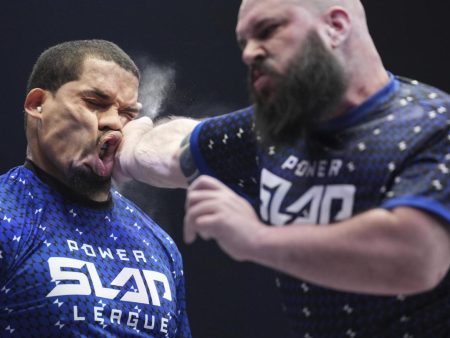

Watching an effective basketball motion offense is a thing of beauty. The ball moves crisply, screens are set, and there is constant movement throughout possessions.
On the contrary, watching an offense with little movement, poor spacing, and awful ball movement can make you want to pull your hair out. When you’re coaching basketball and run the motion offense, you need to make sure that you give your players the tools and knowledge necessary to run a great motion offense.
After reading through this article, you’ll have a great idea of how you can teach a motion offense that is difficult to guard.
Strengths of Teaching the Motion Offense
If you’re on this page, you may be searching for answers on if you should be running a motion offense. My answer to that will always be an overwhelming YES! Here’s why:
- Motion offense teaches your players how to play without being robots. Running countless set plays teaches your players to go to specific spots and perform specific actions. While there’s a place for that in basketball, the motion offense actually teaches your players how the game works and boosts their basketball IQ.
- You can exploit mismatches. In a motion offense, you’re able to find mismatches on the floor and get the ball in the proper player’s hands to exploit their mismatch.
- Makes the defense work. A good motion offense wears the defense down. They have to constantly get hit by screens, chase cutters, and move around the floor. Eventually, they break down and your team has the advantage.
- Scouting the motion offense is hard. Teams aren’t able to know every pass and move your team is going to make like they can with set plays. They have to work their tails off on the defensive end and they are always on their toes about what your team might do next.
Types of Motion Offense
- 5 Out – This type of motion offense has all five players working out on the perimeter, with nobody staying in the post. Players may cut or drive the ball into the post, but they should not stay in there for a long duration of time. Running a 5-out motion offense is typical for a team that doesn’t have a dominant post presence in the game.
- 4 Out, 1 In – This motion offense has four players that work out on the perimeter, and one player stays in the post. The “post” in this instance is usually referred to as the area around the lane. This is a great motion offense to use if you have one good post player and four perimeter players in the game.
- 3 Out, 2 In – As you may have guessed, a 3 out, 2 in motion offense has three players that work out on the perimeter, and two players that work together in the post. Typically, one of the post players is a decent shooter and can work the high post (12-18 feet) and look to go high-low with the other post player.
These are the three basic types of motion offense you can run. The type of motion offense you decide to run should depend on the types of players you have in the game. Have five guys that can all play out on the perimeter? The 5 out motion offense is probably your best bet. Have a post player that has no business going outside of 15 feet? The 4 out, 1 in motion offense is probably the right one for you.
The key is evaluating your personnel and making your decision from there.
Motion Offense Spacing
Spacing within your motion offense is key. Your players should try to stay 12-18 feet apart. By doing so:
- Teams aren’t able to easily double-team you or have one guy guard two of yours.
- It difficult for the defense to play in the gaps and stop dribble penetration.
- Lanes are open for cutters
- It’s hard to get out on shooters. By having great spacing, the help-side defense has to over-commit and shooters are left wide open.
Motion Offense Cutting
One of the biggest keys of a great motion offense is your cutting. If a player on your team passes the ball, they shouldn’t just stand – they should cut and another player will fill their spot. Motion offense is exactly what it says it is – MOTION – movement. The most common types of cuts your players can make within the motion offense are:
- UCLA Cut – A player at the top of the key receives a screen from the block and cuts to the basket
- Basket Cut – A player without the ball cuts directly to the basket looking for the ball
- Curl Cut – A player coming off of a screen curls around the screen directly to the basket
- Flex Cut – A player receives a back screen from the low-block area and cuts to the basket.
- Backdoor Cut – A player is being overplayed, jab-steps outside, and cuts to the basket.
- Flare Cut – A player cuts in the opposite direction of where the ball was just passed to the perimeter.
While there are certainly other cuts that your team can make, these are the most common cuts that can get your players open within a motion offense.
Motion Offense Screening
Something else your motion offense MUST HAVE is effective screening away from the ball. While there is a place for ball screening within a motion offense, I like to stay away from that while I’m teaching. Some screens away from the ball that your team can set are:
- Down Screen – A player on the wing sets a screen for a player in the post to pop out to the perimeter.
- Away Screen – A player in the middle of the floor screens for a player on the weak side of the floor to cut to the ball.
- Flare Screen – A player on the weak side screens for a player in the middle of the floor to cut out to the weak-side wing or a skip pass.
- UCLA Screen – A player on the ball-side block screens for a player at the top of the key to cut to the basket.
- Back Screen – A player in the post screens for the wing to back-cut to the basket.
Again, there are obviously several other types of screens that can be used within a motion offense, but if you begin by teaching your players these basic screens, they’ll be on the fast track to running an effective motion offense.
After a player screens, they can:
- Slip the screen and cut to the basket
- Pop out to the perimeter
- Roll to the ball or basket
- Screen again
- Flare out to the wing
Something that you need to stress to your team is that it is often times the screener that ends up open.
Dribbling in a Motion Offense
When you watch good motion offenses, you don’t see much dribbling for no reason. You need to stress to your team that if they dribble within a motion offense, it needs to be done with a purpose. This means that they should dribble to:
- Create a better passing angle
- Attack the basket
- Avoid a trap or 5-second violation
- Penetrate a gap
- Interchange with a wing
You want your players to still be able to create and not stifle their freedom, but you also don’t want them dribbling for no reason and making the offense stagnant.
Ball Reversals
When watching a basketball game, there is a good chance you’ll hear a coach yell, “REVERSE IT!” multiple times. There’s a reason for this. Ball reversals make the defense shift and create gaps and opportunities for the offense to score. Something you need to stress to your team is that ball reversals are key to finding scoring opportunities.
Looking for a player in the post but he’s not open? Reverse the ball and try to re-post him on the other side.
Want to get a shooter open but the help-side defense is strong? Reverse the ball and make the defense work. That shooter will eventually get open.
What coincides with ball reversals is patience. Your motion offense has to have patience. As we mentioned, if there isn’t an opportunity on the side of the floor your team is currently on, reverse the ball and wait for a great cut or screening action. Patience is a major key to a great motion offense.
Basketball Motion Offense Rules

The best thing about the motion offense is that it gives your players the freedom to create and not be complete robots within your offense. Because of that, you don’t want to give them too many rules to bog down your offense. These three rules are simple enough for everybody to remember, yet still give your players the freedom to create.
- Never stand still after passing the ball. You should always make a cut or a screen.
- If a player is open and you can get them the ball without turning it over, throw it to them. Making the defense scramble is what creates opportunities.
- Keep your spacing. As we mentioned earlier, players should be 12-18 feet apart. If a player notices they’re clogging things up, they should move to keep proper spacing.
And that’s it. Easy enough, right? But you’ll be surprised how these simple rules can make your motion offense much more effective.
Try Out the Motion Offense
We could write five 1,000 page books on the motion offense and it still wouldn’t cover everything about it. But that’s the beauty of it. There’s so much that you can do. It gives your players the freedom to create scoring opportunities, but doing so with some structure.
Implement what you learned in this article, and I guarantee opposing coaches will come running to you asking for the magic formula. But, as you learned in this post, there is no magic formula. It’s a combination of doing a lot of little things correctly that make the whole of your motion offense look like poetry in motion.
Looking for more drills to add to your practices that can help you with the motion offens? Check out our page, ‘37 Basketball Drills for Coaches.’
Have more to add about the motion offense? Have a question about it? Let us know in the comments!











